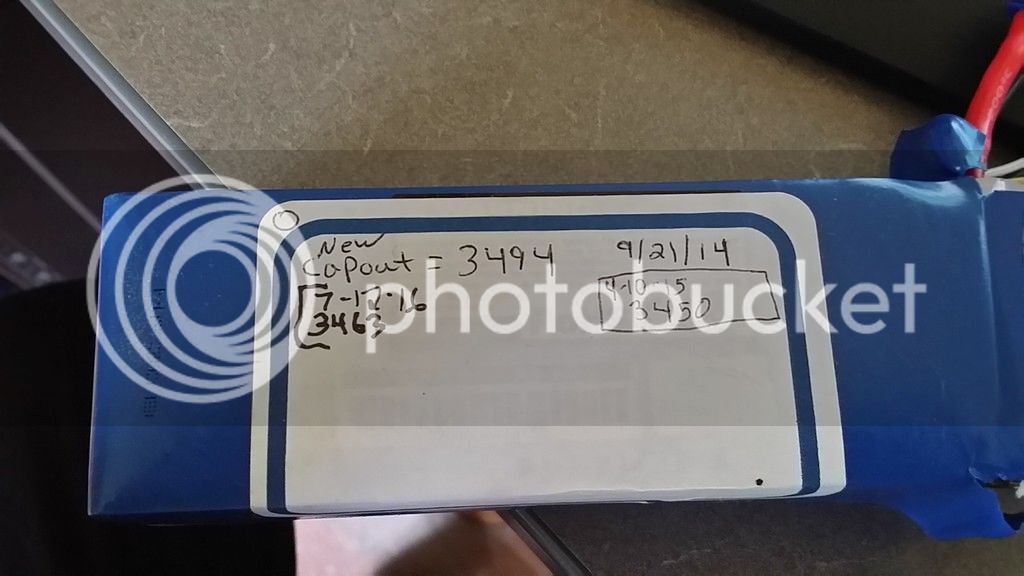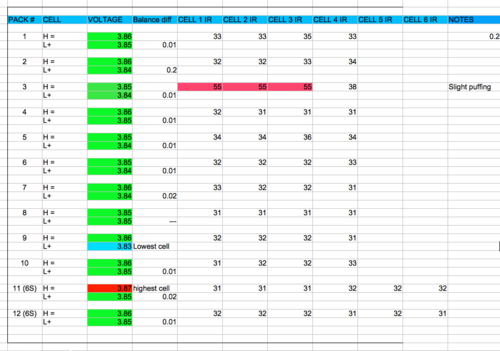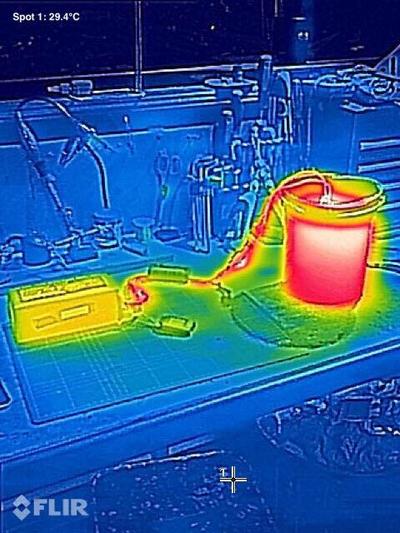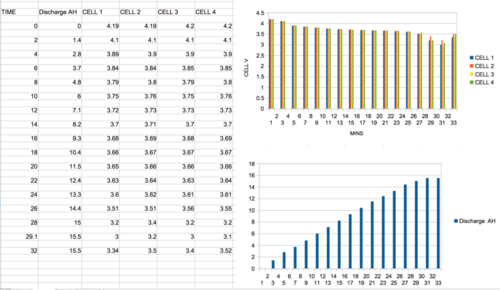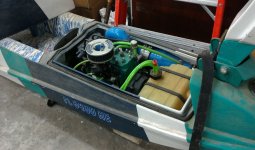miuan said:Hi guys, just wanted to share my recent experience with Multistars.
About a year ago I bought some 4S stuff: 7pcs 10Ah and 6pcs 5,2Ah bricks.
I had a project going on that turned out redundant, so I put the batteries into my fridge.
After a year of sitting at 3-4 degrees celsius I pulled them out to complete a "fresh" 20S 15,2Ah pack with 40A Greentime BMS.
Well I thought the cells would be "as new" since they were refrigerated most of the time.
I discovered that after sitting for a year, 2 of the cells lost a couple hundredths voltage (well, maybe they were like that from the start).
I measured IR of all cells and all there were some big variatons. The worst of 10Ah cells were up to 50% higher IR than the best, and the same kind of variation was there for the 5,2Ah cells. Nothing serious though, considering I won't be pulling more than 80 amps.
Connected the BMS and manually balanced the cells to 0.01V variance. Discharged the pack to 3V per weakest cell. All cells were well under 3.5V by then, indicating less than 2-3% capacity variance between cells. Then fully charged to 4.19V per cell. The measured capacity was 15.5Ah. Very good for a battery that's over one year old.
Moral of the story is, you DO want to keep your batts refrigerated when not in use.
Modern Lipo don't seem to lose much even if not refrigerated.
What you should have done is test the capacity before putting them in the refrigerator, then test them when you took them out after they warmed up. But you would need to test them at close to the same temperature, as even small temperature differences will change the capacity by a few percent.
So these tests you did are not very useful to be honest.
I'm currently doing a capacity test on 18650 cells and put a lot of thought into this. I've put batteries in different locations, different voltages etc.
https://endless-sphere.com/forums/viewtopic.php?f=14&t=81582
For example, here is a 4s 20C turnigy pack that I had sitting in my basement,
9/21/14 = capout 3494
4/10/15 = capout 3450
7/12/16 = capout 3463
You can see that it lost very little capacity in almost 2 years!, however, I took readings in september, april, and july, so the last measurement had the test done when my basement was 80F or 26C, which may have led to higher capacity.
But either way I'm looking at less than 1% capacity loss a year by sitting at 3.7 volts unused. Putting them in the refrigerator would have been a waste of space in my refrigerator. There is no indication that your packs have done better by refrigerating them.
This pack was also left at around 3.7 volts, which may have been why it saw very little capacity loss.
